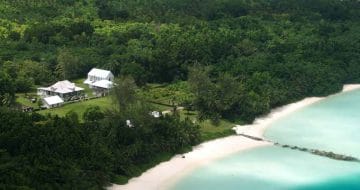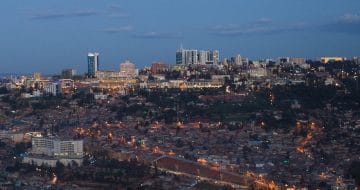Lawyers Ria Das and Sia Das explore the pressing problem of biopiracy of indigenous knowledge

Indigenous people are seeking to protect their indigenous knowledge and practices from commercial exploitation. With rapid advancements in science and technology, there is increased interest in appropriating indigenous knowledge for scientific and commercial purposes. There are instances where big pharmaceutical companies have patented traditional medicinal plants even though indigenous peoples have used such plants for generations. In many cases, these large companies do not recognise the right of indigenous peoples’ traditional ownership of such knowledge and deprive them of their fair share in the economic, medical or social benefits that accrue from the use of their indigenous knowledge or practices.
Biopiracy: The corporate hijacking of indigenous knowledge
Traditional knowledge includes indigenous and local community knowledge, innovations, and practices. It refers to skills and practices that have developed through a trial-and-error method, and passed on from generation to generation within a community.
Biopiracy occurs when genetic resources and indigenous knowledge is taken from biodiverse developing countries without permission. This knowledge is then used to patent related inventions without sharing the resulting commercial profits. The original knowledge holder receives no gains from the use and is likely barred from obtaining a patent.
Commercialisation of resources used by indigenous people is a booming business. Many of the products incorporating indigenous know-how are protected by patents that profess the products’ “novelty” and “innovativeness.” Giant commercial enterprises are using intellectual property rights to patent indigenous medicinal plants, seeds and genetic resources.
Without any legal protection for indigenous knowledge, biopiracy is often a shortcut to gain massive profits without having to provide a fair share of compensation to the local and indigenous communities.
The value of the market for medicinal plants found by indigenous and local communities has been estimated to be around $50 million – and this figure is just for the USA. Obtaining indigenous knowledge increases the efficiency of the screening process for plants with medicinal properties by more than 400%, which is why indigenous peoples’ knowledge is so valuable.
Want to write for the Legal Cheek Journal?
Find out moreHurdles to patent protection of indigenous knowledge
A patent is an exclusive right that is granted for an invention. This can either be a product or a process that generally provides a new way of doing something, or offers a new technical solution to a problem.
Patent law requires that the invention should meet three criteria before a patent protection is granted: (1) new or novel, (2) non-obvious, and (3) useful. All inventions which meet these criteria are legal but the problem arises when patenting of (often spurious) inventions based on biological resources and/ or indigenous knowledge are extracted without adequate authorization and benefit sharing from other countries. These resources are the result of years of hard work and investment of indigenous and local communities which goes unacknowledged and unrewarded.
Under the existing regime, indigenous knowledge and invention is not fit to get patent protection as a result of two factors.
The first element assessed under an application for a patent requires that an invention must be new and innovative. These indigenously developed products are arguably neither new nor innovative, as use of these resources has been developed based on existing indigenous knowledge of the natural world, often held among indigenous communities and local farmers.
The newness criterion is difficult to prove for indigenous peoples because indigenous knowledge is passed down from generation to generation and it is difficult to determine who is first to discover the knowledge. This indigenous knowledge is neither written nor documented anywhere. As long as there is no public written record, a foreign company can go into another foreign country and use this knowledge handed down by indigenous peoples to obtain a patent.
The second element assessed under an application for a patent requires that an invention be non-obvious. The indigenous peoples have already discovered the plants, assessed their healing and medicinal properties and cultivated them for their use. This knowledge, however, is not considered on par with western standards because the indigenous peoples are not looking to profit from the knowledge.
The elements of newness and non-obviousness under patent law operate under the premise that a particular invention should provide certain incentives to the inventor and without it, inventions will not be made. This way of thinking is generally derived from business economy, establishing that without personal monetary benefits no one will create or invent. Alternatively, inventions from indigenous knowledge allow for mutual benefits for the sake of the community without the need for any personal monetary rewards or profits. Unlike in indigenous communities, the western view doesn’t see community rewards as an end result. Rather the prevailing belief is that if a person is given an incentive to invent, the community will be ultimately benefitted from it.
Want to write for the Legal Cheek Journal?
Find out moreExisting international legal mechanisms to combat biopiracy
At the international level, the most important multilateral agreement on intellectual property is the TRIPS (Agreement on Trade-Related Aspects Intellectual Property Rights) and includes protection for different varieties of plants. However, there is no recognition in the TRIPS agreement for prior informed consent from the indigenous communities for use of their knowledge and genetic resources.
The Convention on Biological Diversity (CBD) was the first move towards international dialogue on the protection of biodiversity and indigenous knowledge protection (Ministry of Environment, Forest and Climate Change 2019). However, it is confined only to genetic resources. Subsequently, the United Nations Declaration on the Rights of Indigenous Peoples (UNDRIP) 2007 provides indigenous peoples “the right to maintain, control, protect and develop their intellectual property over their cultural heritage, traditional knowledge, and traditional cultural expressions”.
Additionally, the International Treaty on Plant Genetic Resources for Food and Agriculture (ITPGRFA) was adopted by the FAO in 2004 and allows citizens of signatory countries to use the resources, provided they use them for non-commercial purposes and do not acquire IP rights over the same.
Another highly significant international agreement is the Nagoya Protocol on Access and Benefit Sharing to the Convention on Biological Diversity (CBD) — this may help resolve some of these ambiguities, but it too has fallen short on protection of rights of indigenous people. These agreements deal with very limited subjects of indigenous knowledge i.e., genetic resources and biodiversity to the exclusion of others and therefore, do not cover all the intellectual property issues. The current international patent regime is incapable of recognizing or rewarding the indigenous knowledge of local communities as many countries are not signatories to these treaties and therefore, these international bodies offer little protection.
Want to write for the Legal Cheek Journal?
Find out moreInstances where indigenous knowledge has been patented for profits
Big corporations like Bayer-Monsanto, Syngenta, Dow/Corteva and others have been generating profits by patenting indigenous seeds and control more than half of the global seed market. Unfortunately, this is without the knowledge and consent of Indigenous communities. Other well-known instances are:
The Ayahuasca case
Lorren Miller was granted an US patent over B Caapi Mort. He named it as ‘Da Vine’ and stated that it had certain medicinal properties.
In 1999, the CIEL (Center for International Environmental Law) on behalf of the Coordinating Body of Indigenous Organizations of the Amazon Basin (COICA) and the Coalition for Amazonian Peoples and Their Environment (Amazon Alliance), filed a legal opposition against the US patent on “Ayahuasca” vine on the ground that it is sacred to indigenous Amazon groups and has been used for medicinal and ceremonial purposes for generations.
In November 1999, the US Patent and Trademark Office (PTO) withdrew the patent granted upon reexamination. The PTO accepted the petitioners’ contentions to the extent that the plant variety was not distinct or novel as it was used for generations. However, the PTO did not take into account the arguments that plants’ religious value can prevent a patent grant.
However, in 2001, the inventor was successful in convincing the PTO. So, the original claims were reconfirmed, without giving any opportunity to CIEL, COICA and Amazon Alliance to present their opposing views. The patent rights were restored to the owner, Lorren Miller for the remaining two years of its patent period.
The Hoodia Case
The indigenous San people, who are one of the oldest and most marginalised communities on the African continent, have long been using the succulent plant “Hoodia” to stave off their hunger and thirst. In 1995, the CSIR (Council for Scientific and Industrial Research) patented the active ingredient of the plant and stated it was a remedy for anti-obesity. Later in 1997, it was patented to Phytopharm, a British biotech firm, which then sold the license to produce and sell it as an obesity treatment to Pfizer.
The San people came to know about the exploitation of their traditional knowledge and in 2001, they initiated legal proceedings on the ground of biopiracy against CSIR and pharmaceutical industries. It was contented that CSIR had stolen their traditional knowledge and failed to comply with the CBD (Convention on Biodiversity) provisions which required them to take prior informed consent from all stakeholders, including discoverers and users.
In March 2022, an agreement for benefit sharing was reached between the parties and it was decided that the San community would receive a share of future royalties.
Want to write for the Legal Cheek Journal?
Find out moreThe way forward: Protecting indigenous communities’ traditional knowledge
At the national level
- A database for indigenous people’s traditional knowledge can be created. An authenticated database including the list of traditional formulas, herbal preparations, seed variety etc., would be available to all the patent authorities and systems. This will ensure that there are no false claims of novelty and distinctiveness. India provides an example of where traditional knowledge of local communities is compiled and registered in such a database and this is updated in accordance with local needs, knowledge and laws.
- Local units can be set up at each district/region to support communities to develop protocols that will guide local communities and outsiders (corporations, researchers) in discussions about informed consent, benefits sharing, conservation benefits and access to indigenous knowledge and biological resources.
- In addition to international recognition of the right of indigenous peoples, a framework needs to be developed by states that recognises the relationship between indigenous knowledge and customary law and provides a safe space for the operation of indigenous legal systems. This will protect the traditional knowledge from misappropriation and misuse and will further provide additional benefits to indigenous communities that flow from the recognition of ownership.
At the international level
- Patent applications can be made more conditional by adding requirements as to origin disclosure of traditional knowledge/resources and evidence of informed consent and fair benefit sharing. A proper identification system should be developed for each case before the patent office.
- Regulatory gaps need to be closed in the international laws and conventions. The Nagoya protocol has several lacunae. For instance, it does not have a forum for adjudicating indigenous peoples’ biopiracy claims and also has a weak penalty regime. As a result, the disincentive against biopiracy is not sufficiently potent.
Concluding thoughts
Development of national level mechanisms and legal provisions is the need of the hour to prevent the corporate hijacking of indigenous knowledge. At the core of this concern is the need to share biodiversity benefits equitably and fairly, and to safeguard rights to food and biodiversity, promote environmental justice and health equity for all. Through our suggestions, we aim to address biopiracy and provide economic aid to indigenous communities, allow companies to responsibly develop and use traditional knowledge and resources from these communities, and promote local and global well-being. Unfortunately, till now, no inclusive and coherent efforts have been made internationally to address this concern.
Ria Das and Sia Das are lawyers in the Delhi High Court in India. They act in a variety of matters including socioeconomic issues, environmental law and criminal law, and also carry out international law and policy research.
 (
( (
(

